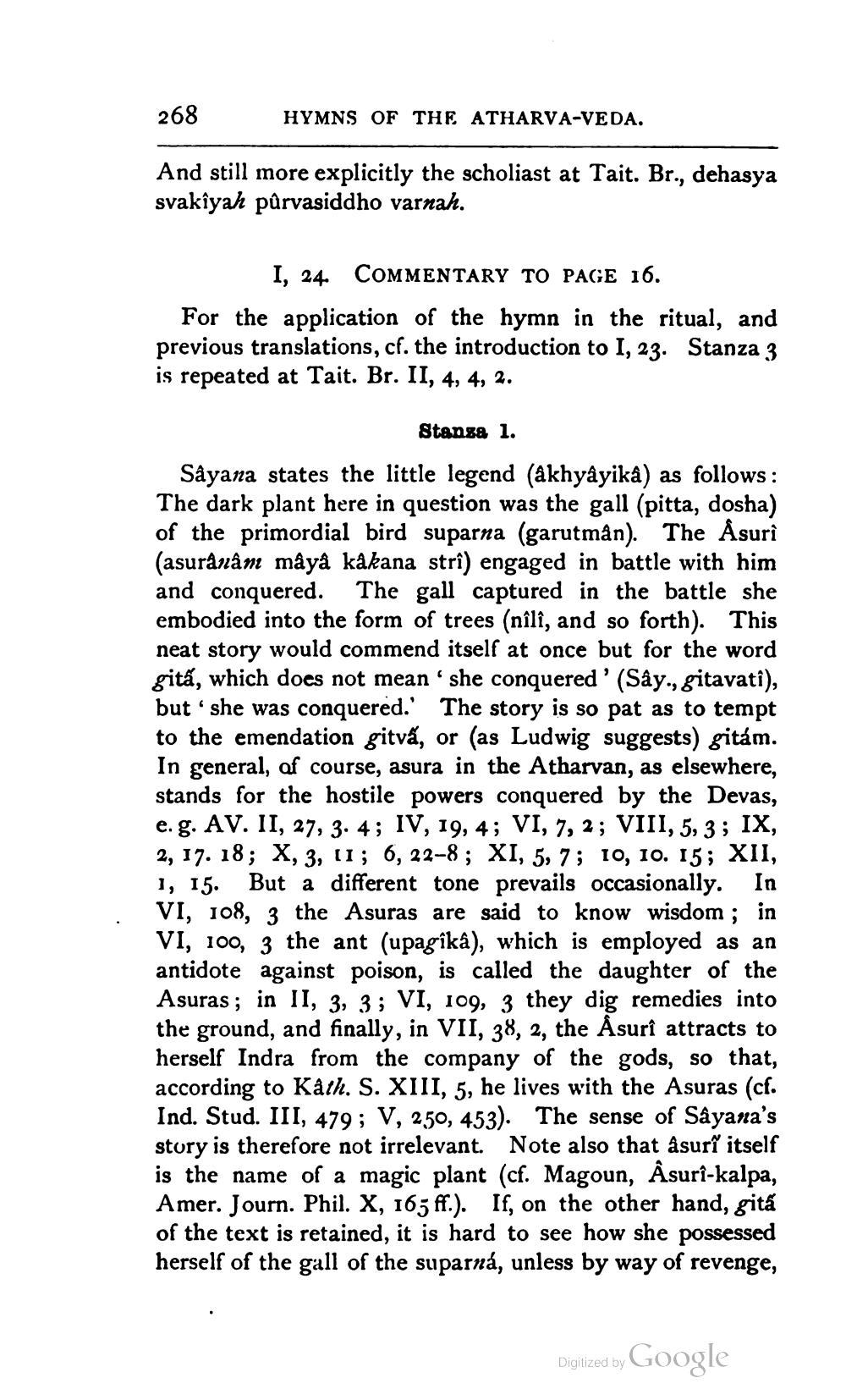________________
268
HYMNS OF THE ATHARVA-VEDA.
And still more explicitly the scholiast at Tait. Br., dehasya svakîyah půrvasiddho varnah.
I, 24. COMMENTARY TO PAGE 16. For the application of the hymn in the ritual, and previous translations, cf. the introduction to I, 23. Stanza 3 is repeated at Tait. Br. II, 4, 4, 2.
Stansa 1.
Sâyana states the little legend (akhyâyika) as follows: The dark plant here in question was the gall (pitta, dosha) of the primordial bird suparna (garutmån). The Asuri (asuranån mâyå kåkana strî) engaged in battle with him and conquered. The gall captured in the battle she embodied into the form of trees (nîlî, and so forth). This neat story would commend itself at once but for the word gitā, which does not mean she conquered ' (Sây., gitavatî), but she was conquered.' The story is so pat as to tempt to the emendation gitvá, or (as Ludwig suggests) gitám. In general, of course, asura in the Atharvan, as elsewhere, stands for the hostile powers conquered by the Devas, e.g. AV. II, 27, 3. 4; IV, 19, 4; VI, 7, 2; VIII, 5, 3 ; IX, 2, 17. 18; X, 3, U1; 6, 22-8; XI, 5, 7; 10, 10. 15; XII, 1, 15. But a different tone prevails occasionally. In VI, 108, 3 the Asuras are said to know wisdom ; in VI, 100, 3 the ant (upagika), which is employed as an antidote against poison, is called the daughter of the Asuras; in II, 3, 3 ; VI, 109, 3 they dig remedies into the ground, and finally, in VII, 38, 2, the Asurî attracts to herself Indra from the company of the gods, so that, according to Kath. S. XIII, 5, he lives with the Asuras (cf. Ind. Stud. III, 479 ; V, 250, 453). The sense of Sayana's story is therefore not irrelevant. Note also that asuri itself is the name of a magic plant (cf. Magoun, Åsuri-kalpa, Amer. Journ. Phil. X, 165 ff.). If, on the other hand, gitá of the text is retained, it is hard to see how she possessed herself of the gall of the suparná, unless by way of revenge,
Digized by Google




